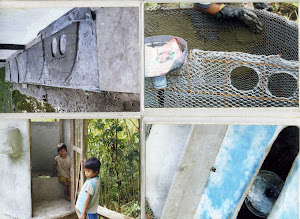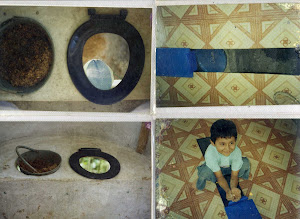En estas fotos de acercamiento, podemos ver cómo el punto de contacto entre las botellas que contienen el suelo en forma vertical y las plantas que crecen en este suelo. Esta es una gran opción para convertir la heces descompuestas y la orina humana en saludables frutas, vegetales y plantas medicinales (como esta planta morada de Escansel, que es bueno para el riñón). Con estos, se puede hacer agricultura urbana, encima de las terrazas de los edificios, pegados a sus paredes o incluso formar las mismas paredes de nuevas casas.
Desean ver cómo los construyo? Favor escribirme, para que yo sepa que haya interés.
PET Bottle Vertical Gardens by Chris Canaday is licensed under a Creative Commons Attribution-ShareAlike 3.0 Unported License.
Based on a work at inodoroseco.blogspot.com.
Permissions beyond the scope of this license may be available at inodoroseco.blogspot.com.
Sneak Peek at the Vertical Gardens made from Bottles
In these close-ups, we can see the point of contact between the bottles that hold the soil vertically and the plants that grow in this soil. This is a great alternative for safely converting human urine and decomposed feces into healthful fruits, vegetables and medicinal plants (like this purple Escansel plant, which is good for the kidney). With these, we can do urban agriculture, on the roofs of buildings, stuck to their walls, or even forming the walls of new houses.
Do you want to see how I build these? Write me, so I can know if there is interest.


















